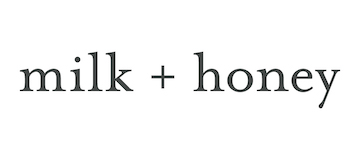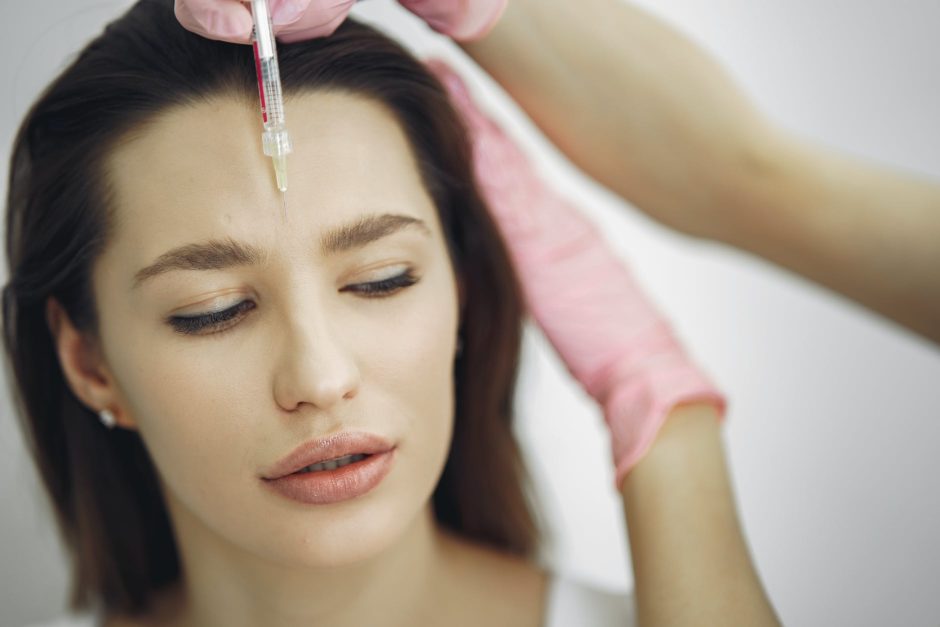You can’t fight the passing of time. Or at least that’s what the mirror says when you lean in for a closer look at your skin. You might see crow’s feet, forehead wrinkles, sunken cheeks, thin lips, or the dreaded “11s” — those vertical frown lines between the eyebrows.
The good news is, you’re not stuck with those age-related issues. If topical treatments aren’t cutting it, but you’re not ready for invasive surgery, a course of injectables could deliver the youthful appearance you’re craving. Injectables can smooth wrinkles and folds or add definition and contouring, and with minimal downtime to boot.
Before you walk into your dermatology center or med spa, it helps to know more about injectables landscape. There are several treatment options, and they don’t all function in the same way. Read on for the scoop on the types of injectables available, including how they’re used, how much they cost, and what you can expect before, during, and after your treatment.
Injectables and Fillers Overview
What are injectables?
Injectables are a class of anti-aging treatments for the face, neck, and hands. They get their name from the method of application. A dermatologist or aesthetician injects a medicine into the skin as a temporary fix for wrinkles, lines, or the loss of contouring.
There are three types of injectables, each with a different method of action:
- Neuromodulators freeze the facial muscles that cause wrinkles.
- Dermal fillers, explained in more detail below, add volume underneath the skin.
- Kybella breaks down fat deposits, specifically those that build up below the chin.
What are dermal fillers?
Dermal fillers are gel formulations that plump the skin. They can treat various anti-aging complaints, including thin lips, wrinkles and creases, and age-related definition loss. The face is the primary treatment area — lips, mouth, eyes, jawlines, cheeks, nose, and chin. But aestheticians may also use dermal fillers on the backs of the hands, which can also become sunken with age.
Ingredients you might see in a dermal filler include Hyaluronic Acid (HA), Calcium Hydroxylapatite (CaHA), Poly-L-lactic Acid, and Polymethylmethacrylate (PMMA).There is also a procedure that uses fat harvested from the patient’s body as a filler.
6 popular types of injectables and fillers
Botox
Botox is the original neuromodulator. Dermatologists and aestheticians use it to smooth crow’s feet, forehead lines, and creases between the eyebrows.
Xeomin
Xeomin, also a neuromodulator, works like Botox but has fewer inactive ingredients. The manufacturing process strips away unnecessary proteins to isolate the active protein, which is botulinum toxin Type A. Dermatologists believe Xeomin’s additive-free formulation prevents people from developing resistance to the treatment — which can happen with Botox. There is no definitive evidence that the purer formulation produces better or different results, however.
Xeomin is FDA-approved for use on creases between the eyebrows, though aestheticians also use it to smooth crow’s feet and forehead wrinkles.
Dysport
Dysport is also a Botox alternative. Compared to Botox, Dysport is more diluted and spreads out more easily after injection. For that reason, aestheticians may recommend Dysport over Botox for larger areas of the face like the forehead.
Juvederm
Juvederm is a brand of gel dermal fillers made of HA. The Juvederm product family smooths moderate-to-severe facial wrinkles. It can also add volume and restore lost contouring of lips, cheeks, and the area around the mouth.
Restylane
Restylane, like Juvederm, is a brand of dermal fillers. Restylane HA gels can correct wrinkles and folds around the mouth and cheeks. Aestheticians also use Restylane to add volume to the cheeks and lips.
Revanesse Versa
Revanesse Versa is a newer HA filler that’s designed to cause less swelling and last longer than other treatments. As with Juvederm and Restylane, Revanesse Versa fills in facial wrinkles and folds around the mouth and cheeks.
Injectable and filler areas for the face
Lips
Lips can show aging earlier than other parts of the face. As skin breaks down with age, lips lose definition and start to look thinner. The corners of the mouth can also begin to droop.
HA fillers remedy those issues temporarily by adding volume and definition, directly to the lips or to the area around the mouth.
Cheeks
When you’re young, your face has naturally occurring fat pockets that add shape and contouring to cheeks and other areas. With age, those fat deposits lose volume and can even move — leaving sagging skin behind.
HA fillers can restore the lost volume temporarily, which also corrects sagging skin.
Forehead
Forehead lines and wrinkles develop from repeated movement of the forehead muscles — usually caused by frowning. These can appear in your 20s and become more exaggerated over time, particularly with sun exposure.
Neuromodulators are the injectables of choice for smoothing out forehead wrinkles. Since these formulas freeze the muscle, they can also slow the formation of new wrinkles.
Chin/jawline
Aging-related volume loss in the chin can create an imbalance in facial features. The chin or jawline can appear weak or undefined as a result.
An aesthetician might recommend a dermal filler to restore chin or jawline definition, smooth wrinkles, or even to fill in a cleft chin. For a double chin specifically, Kybella is also an effective treatment.
How much do injectables and fillers cost?
Neuromodulator injectables are sold in units. The units themselves are inexpensive, but the total price of treatment depends on how many units you need. A targeted treatment might be as low as $75, though most will pay $400 to $500 per session.
Dermal fillers cost more than Botox and its competitors. Depending on the type of treatment and the formula being used, you might pay $525 to $1,000 per treatment.
What to expect during your injectable or filler treatment
Your injectables procedure should always begin with a consultation. That’s when you share your skin concerns with your dermatologist or aesthetician. Based on your input and a skin exam, your skincare professional will recommend a treatment plan.
Neuromodulators
At the time of treatment, your professional will clean your skin. You should not need anesthesia for neuromodulator injections. The pain is minimal — you’ll feel only a small prick. You will need multiple injections, but the exact number depends on the treatment area. You might get four injections to smooth forehead wrinkles, and only two to correct lip wrinkles.
One thing that can be confusing is the difference between a unit of Botox or Xeomin and an injection. To be clear, each injection can include more than one unit of the medicine. For example, you might get 20 units of Botox administered in four shots.
Your neuromodulator treatment should take 15 to 20 minutes.
Dermal fillers
The dermal filler procedure is similar but with two key differences. First, the procedure may take longer — up to 60 minutes, depending on the treatment area. Second, specific to Restylane injections, you may receive a topical anesthesia. Juvederm and Revanesse Versa generally don’t require anesthesia.
Recovery time after receiving injectable and filler treatments
Most people experience minimal to no downtime after their injectable treatments. The most common side effects are swelling and bruising around the injection site. The swelling normally resolves itself within an hour but bruising and soreness can last up to two weeks. For that reason, it’s smart to clear your calendar of any special events for two weeks following your treatment.
How long do injectable and filler results last?
The smoothing effects of Botox, Xeomin, and Dysport normally last two to four months. Dermal fillers can retain their effectiveness for up to one year.
Which injectable or filler is right for you?
Injectable treatments may seem routine and commonplace, but they are medical procedures. As such, it’s critical to work with a qualified provider who can recommend an individualized treatment plan — and then deliver that treatment safely and effectively.
milk + honey Medical Aesthetics partners with renowned dermatologist Dr. Tyler Hollmig so you receive the highest quality care available. Hollmig, along with a team of Board-certified medical professionals, can skillfully identify the best injectable treatment for your skin and your lifestyle.
Turns out, you can fight the passing of time. Set up a consultation today and get ready to look your best tomorrow!



5 Comments
Thanks a bunch for sharing this guide. There’s always a risk involved with it, but it’s usually safe and with minimal side effects from what I heard about these types of procedures.
I have searched a lot of articles about dermal fillers and I found your article related to my issues regarding fillers. Thank you for sharing it.
Thank you for sharing this guide. This information is really very helpful.
Thank you for this informative and well-researched article on facial injectables. It’s refreshing to come across a post that not only educates but also stresses the importance of safety and proper consultation.
I’ve been considering injectables for some time now, and your post has shed light on various options and their potential benefits. The idea of enhancing my appearance without undergoing surgery is intriguing, and I appreciate your explanation of how each type of injectable works.
Your emphasis on seeking a qualified professional for such procedures is invaluable. Safety should always be a top priority, and your guidance on this matter reassures me about making an informed decision.
Your inclusion of personal experiences and real-world results provides a relatable aspect to the topic, making it easier for readers like me to connect with the information.
I’m looking forward to reading more of your content and gaining further insights into the world of cosmetic procedures.
This guide to injectables and fillers is super informative! For anyone considering dermal fillers, I highly recommend https://pdcosmetics.com/ as one of the best dermal fillers suppliers. Their range of products is top-notch, and I’ve had a wonderful experience using them. It’s made such a difference in my skincare routine. Thanks for all the great info!